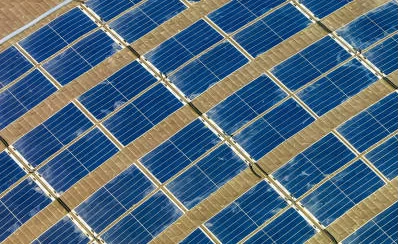Embracing the Future of Energy: The Rise of Flexible Solar Cells
In today’s world, the need for sustainable energy solutions has never been more critical. As we face the challenges of climate change and the depletion of traditional energy sources, innovative technologies are stepping up to provide viable alternatives. One such breakthrough is flexible solar cells. These lightweight, adaptable, and efficient solar panels are revolutionizing how we harness solar energy, paving the way for a greener future.

What Are Flexible Solar Cells?
Flexible solar cells are a type of photovoltaic technology that allows solar energy conversion on bendable substrates. Unlike traditional solar panels, which are rigid and bulky, flexible solar cells can be integrated into a variety of surfaces. This flexibility makes them suitable for a wide range of applications, from powering homes to energizing portable devices.
The Benefits of Flexible Solar Cells
- Lightweight and Portable
One of the most significant advantages of flexible solar cell is their lightweight nature. Traditional solar panels can be heavy and difficult to install, but flexible solar cell can be easily transported and installed on various surfaces, including rooftops, vehicles, and even clothing. This portability makes them an excellent option for outdoor enthusiasts and those living in urban areas with limited space.
- Versatile Applications
Flexible solar cell can be used in a multitude of applications. They can be seamlessly integrated into building materials, such as windows or roof tiles, allowing for energy generation without sacrificing aesthetics. Additionally, they can be used in wearables, like solar-powered backpacks or jackets, making it possible to charge devices on the go.
- Cost-Effective
As the technology behind flexible solar cell continues to advance, the production costs are decreasing. This makes them an increasingly viable option for consumers and businesses alike. With lower installation costs and the potential for energy savings, flexible solar cell offer a compelling financial argument for those looking to invest in renewable energy.
- Enhanced Energy Efficiency
Recent advancements in flexible solar cell technology have improved their energy conversion efficiency. While traditional solar panels have an efficiency range of around 15-20%, some flexible solar cells can achieve similar rates. This means that even on smaller surfaces, they can still produce significant amounts of energy, contributing to overall sustainability.
How Flexible Solar Cell Work
Flexible solar cell operate on the same fundamental principles as traditional solar panels. They convert sunlight into electricity using photovoltaic materials. When sunlight hits the cells, it excites electrons in the material, creating an electric current. The flexibility comes from the substrate on which these materials are applied, typically plastics or thin films, which allows the panels to bend and conform to various shapes.
The Future of Flexible Solar Cells
The future looks bright for flexible solar cell. As technology progresses, we can expect even greater efficiency and versatility. Researchers are exploring new materials and methods to enhance the performance of flexible solar cell, aiming to make them even more accessible and affordable.
Potential in the Automotive Industry
One exciting application of flexible solar cell is in the automotive sector. Imagine cars with solar panels integrated into their roofs, providing a supplementary power source for the vehicle. This could reduce reliance on traditional fuels and enhance the efficiency of electric vehicles, contributing to a more sustainable transportation system.
Integration with Smart Technologies
As smart home technology continues to grow, the integration of flexible solar cell into these systems could revolutionize how we consume energy. Imagine solar panels that can communicate with your smart home system, optimizing energy usage based on real-time data. This level of integration could lead to significant energy savings and increased sustainability.
Challenges Ahead
Despite the many advantages, flexible solar cell face challenges that must be addressed before they can reach their full potential. Durability is a concern, as these cells need to withstand environmental conditions while maintaining efficiency. Additionally, further research is needed to improve manufacturing processes and materials to ensure long-term viability.
Conclusion
Flexible solar cell represent a promising advancement in renewable energy technology. Their lightweight, portable design and versatility open up numerous possibilities for integration into everyday life. As we move toward a more sustainable future, embracing innovations like flexible solar cell will be crucial in our efforts to combat climate change and reduce our carbon footprint. Whether you’re a homeowner, a business, or simply an eco-conscious consumer, now is the time to explore the potential of flexible solar cell and consider how they can benefit you. The future of energy is flexible, and it’s just getting started.
